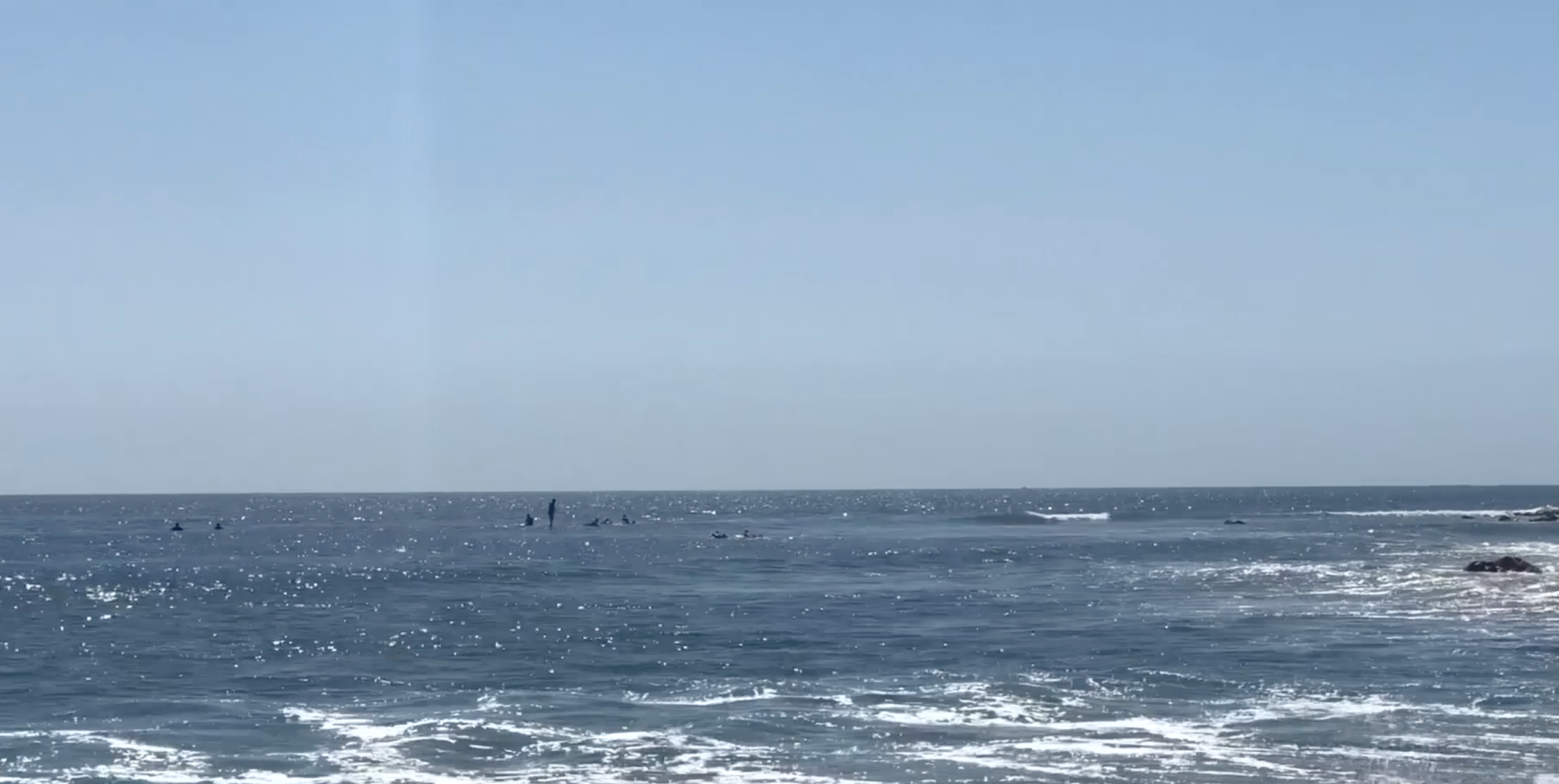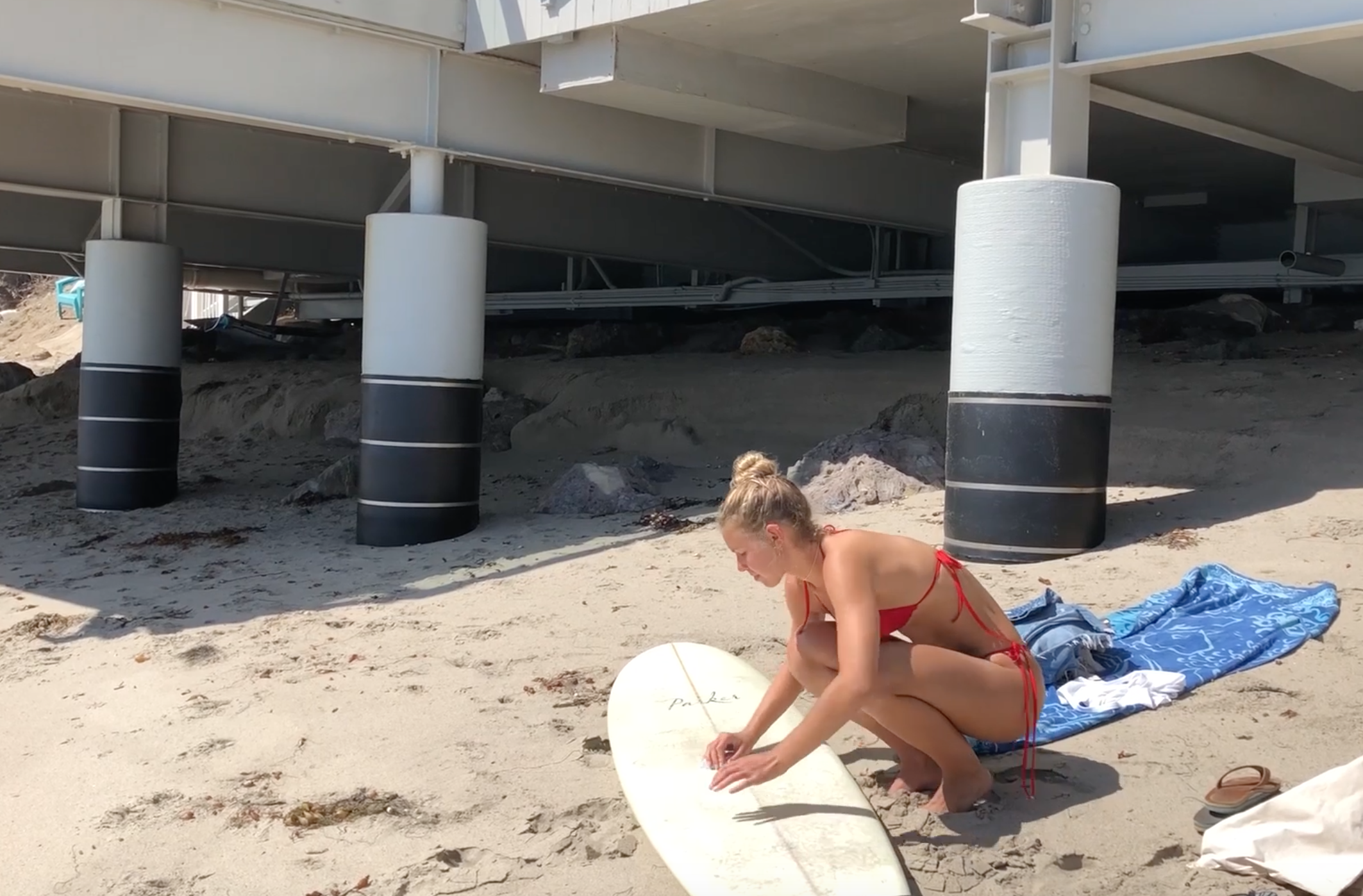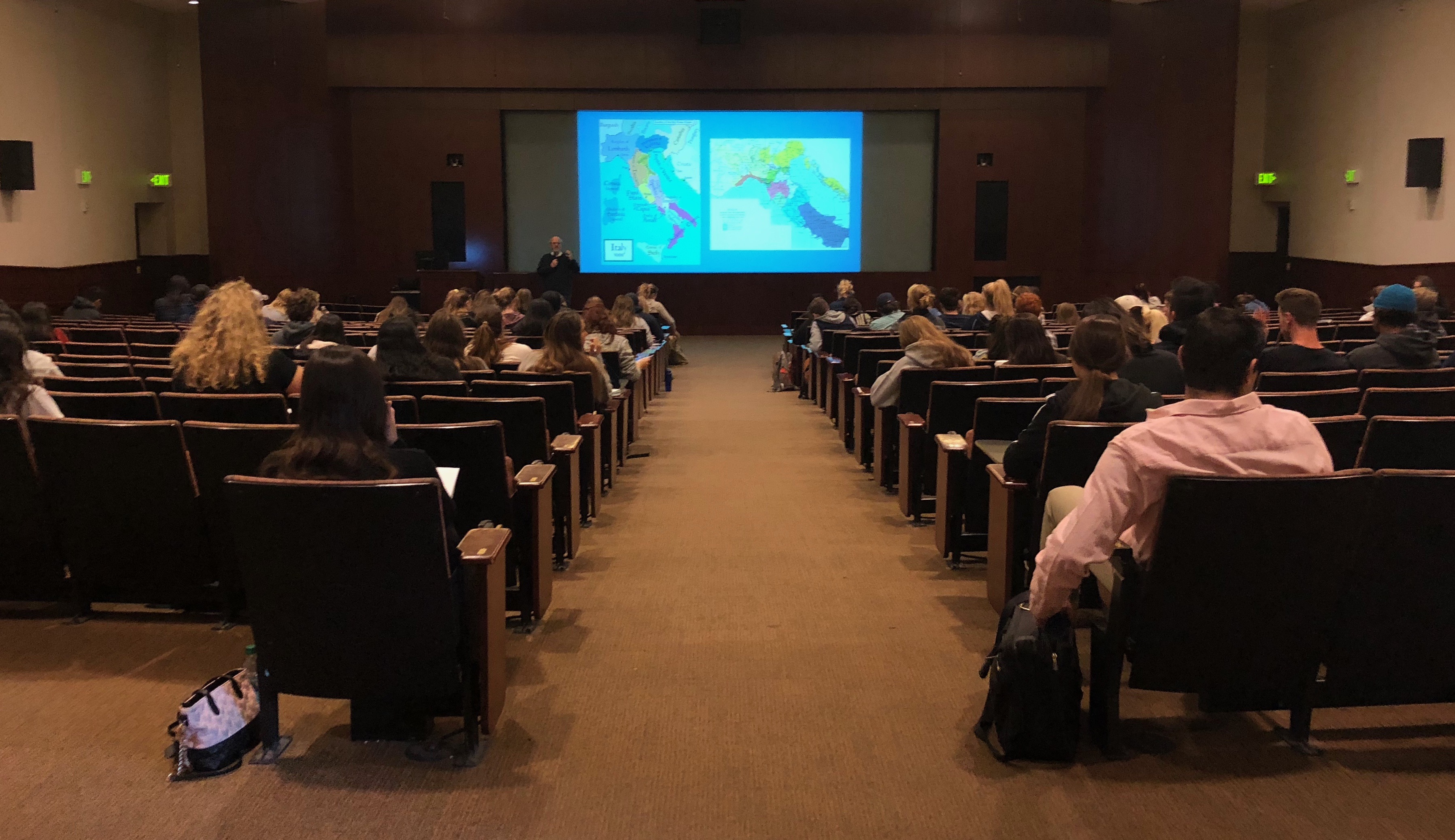
The surfing community made headlines last year with the saying, “equal pay means equal waves,” as the professional competition became the first sport in American history to offer equal pay to both male and female surfers. And now surfing is about to take on its biggest wave yet, as it is set to make its Olympic debut in the Tokyo 2020 Summer games. But no matter how many feats this sport is making, females are still having a hard time catching a break.
“It’s a lot harder for us girls to get waves, get respect, and be treated as an equal out there,” said Leila Anawalt, competitive surfer and member of the Pepperdine Surf Team. “I have always felt myself working harder than men to get the same respect and the number of waves that they get.”
Anawalt says that in her 10 plus years of competitive surfing, she has seen various images of the ideal “female surfer” come and go in the community. But ultimately, from the beachy blonde bombshell to the tanned and toned tomboy, each female surfing figure is put under the same scrutiny and deals with the same struggles as the girl before her.
“When I tell people that I surf, people will always just have a surprised reaction,” Anawalt said. “What they will always say is, ‘Oh, you’re such a cool surfer girl.’ Like no, I identify as a surfer, an equal.”
Having grown up in the Malibu surfing community, Anawalt acknowledges that female surfers have been wave-fighting for decades despite any progress that is made in the surfing community as a whole. And surfers who have just entered the community, like Malibu local Sara Smith, agree.
“I’ve been surfing for a little over a year, and whenever a girl is out in the water, you’ll either have guys A: hit on you and not stop talking to you, or you’ll have guys who kind of look down on you and jump on all of your waves,” Smith said. “You have to fight for it out there.”
But these women are tired of fighting for their waves, and calls for continued improvement are gaining traction.
Making Waves Outside the Water
Krista Comer, author of the book “Surfer Girls” and professor of Women’s Studies at Rice University, decided it was time to take action out of the water and investigate the issue when she saw that the surf world was promoting itself in a new identity — one that Comer believed did not reflect what was actually going on in the water.
“There were all these surf companies like Billabong, Roxy, Quiksilver, and they were talking about surfing as a girl-friendly sport, and they were selling things like board-shorts as a way to prove that surfing was now open to women and girls in a new way, and I wasn’t entirely persuaded by that,” Comer said. “I thought, ‘Are girls being invited to surf or are they being invited to spend money on boardshorts?’”
Now, Smith said she feels comfortable wearing one thing in the water, but once she gets out, those feelings change.
“It gets kind of uncomfortable because I’ll literally have to have my boyfriend come close to me so that I don’t have guys that are just like, ‘Oh, what’s your name? How long have you been surfing? Are you cold ’cause you’re not wearing a wetsuit?’ Like, ‘No, I just didn’t want to wear a wetsuit,’” Smith said.
From boardshorts to wetsuits, Comer says the surf industry (particularly the surf-fashion brands) has had a major impact on the way the world perceives female surfing.
“There is an image of women surfers, and the image is usually more important to surf media than to actual women surfers,” Comer said. “If you look a certain way, they will give you a sponsorship even though you don’t surf as well as other people, and sometimes the best surfers don’t even get a sponsorship because they don’t look the way the media wants you to look.”
Bianca Valenti: Changing the Face of Female Surfing
One of the most famous examples of the surf media’s discrimination toward non-model surfers is the case of Bianca Valenti. Valenti has made a name for herself in the game of big wave surfing — one of the most dangerous disciplines of surfing in which an individual will paddle into waves that are at least 20 feet or higher in an attempt to ride them through.
Because of the extreme difficulty of mastering this type of surfing, to the notable deaths of legendary Mavericks surfers Mark Foo and Donnie Solomon, Valenti did not think females were even allowed to take on such big waves, according to the New York Times. But she was determined to change that, and she did by becoming a surf world standout at Mavericks, Ocean Beach, Puerto Escondido, Jaws and Nelscott Reef.
Despite her success, once the sponsorships started flooding in, Valenti noticed that each sponsor “paid more to girls who looked like models, even if Valenti outsurfed them. [And] When she protested, she lost her endorsement contracts,” she recently told the New York Times.
Then, in 2014 when Valenti participated in the first women’s Big Wave Tour event held at Nelscott Reef in Oregon, according to ESPN, Valenti bonded with fellow professional big-wave surfer Paige Alms over the realization that they were participating in the same event (Big Wave tour) and being put through the same difficulties and pressures as male surfers, but they were not being awarded the same amount of prize money.
That is where they drew the line.
Valenti and Alm’s frustration with both the surf industry as a whole is what sparked her to create the Committee for Equity in Women’s Surfing (CEWS), according to ESPN.
CEWS’ goals include supporting “equality, inclusion, equal access, and pay parity” as well as “increasing the number of events and the number of awards for women, as well as offering equal prize money,” according to its website.
A timeline on the CEWS details every progressive step the Committee has made, starting in 1994 with bodyboarder Sarah Lucas breaking the surfing world’s “gender barrier.”
In most recent news, CEWS reports that Sept. 9, “co-founders Keala Kennelly, Bianca Valenti, Sabrina Brennan and CEWS founding counsel Karen Tynan and Betty Depolito attended the Surfing Rules Committee meeting with City/County of Honolulu officials.”
But Valenti is not the only surfer striving for equal waves and equal pay in the water.

The Institute for Women Surfers
Comer’s similar ambition, in which she was interested in investigating sexism in surfing, is what prompted her to become the co-founder of the Institute for Women Surfers, “a grassroots educational initiative in the Public Humanities that brings together women surfers, activists, artists, business owners, and educators, to create spaces of peer teaching, learning, and mutual aid,” as stated on its website.
Comer said the Institute came out of surfers starting to reach out to her after reading about some of her ideas in the book “Surfer Girls.” And these ideas expand far beyond tackling the issues that surround females in the surfing world.
“For the Institute for Women’s Surfers, our vision of a different world is not just a world in which women get equal pay, but it’s a world that is organized so that other issues besides equal pay are part of the Institute vision like racial justice, climate justice, economic equality and economic equity,” Comer said. “Because you can get the same amount of pay as a man, but the world hasn’t changed that much and that’s not a different world.”
Does equal pay really mean equal waves?
The equal pay announcement came Sept. 5, 2018 and was praised by the surfing community.
“This is a huge step forward in our long-planned strategy to elevate women’s surfing, and we are thrilled to make this commitment as we reveal our new 2019 schedule,” WSL CEO Sophie Goldschmidt said in the League’s official press release. “This is the latest in a series of actions the League has undertaken to showcase our female athletes, from competing on the same quality waves as the men, to better locations and increased investment and support.”
And women are not the only ones excited about this change. Men are just as thrilled about this progressive step for female surfers and the surfing community.
“The women on the tour deserve this change, and I’m so proud that surfing is choosing to lead sports in equality and fairness,” said Kelly Slater, surfing legend and 11 World Championships titleholder, in a WSL interview. “The female WSL athletes are equally committed to their craft as the male athletes and should be paid the same. Surfing has always been a pioneering sport, and this serves as an example of that.”
So what’s next?
Aside from cheering on their fellow females on the Olympic stage next year, the Institute for Women Surfers is set to have their largest event yet in San Diego 2020. This event will host all the Institute’s chapters, spanning from the United States, Europe and Australia, in the hopes of garnering more support from the industry in light of the sport’s Olympic stage debut.
Comer says she is also working with social science researchers from Cal State Channel Islands on an online survey about the climate of gender and gender attitudes in surfing in different places around the world.
“We really want to share people’s thoughts and hear what they think about the areas and places they are surfing and how issues of equity and diversity are being handled — which places are welcoming and why,” Comer said.
Comer added that even though the World Surf League (the US sports league for professional surfing) offers equal pay to competitors, this does not mean the same progressive steps are being made in other surfing federations around the world. Comer said she hopes that the data collected will help to push the same efforts that are being made in the WSL.
“I mean, we are still a long way from women being equal to men in surfing, I mean that is for sure, although there are gains being made,” Comer said.
The next event for the Institute for Women Surfers will be its annual summit in San Diego 2020. The summit will host all of the Women Surfer Institutes from around the world, and Comer said she is excited to get more individuals involved with the surfing community just before this summer’s Olympic Games.
Madison Nichols completed the reporting and writing for this story under the supervision of Dr. Ken Waters in Jour 590: Sports Reporting in Fall 2019.



